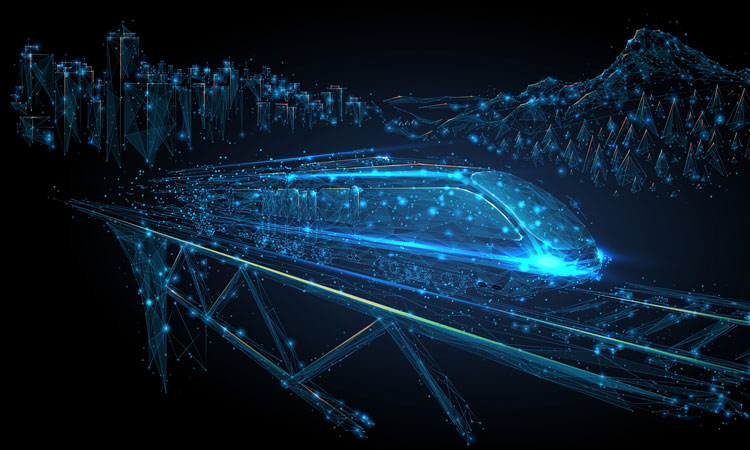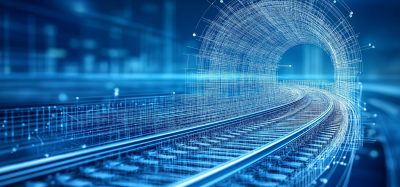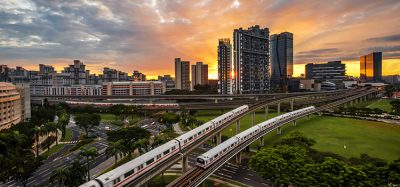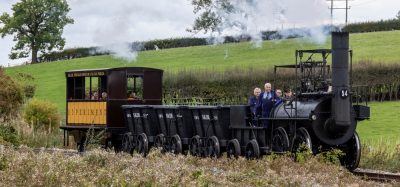Better rail services with digital transformation
With a wide range of digital solutions – including its Smart Rail ICT architecture, AirFlash 5G Microwave enterprise solution and Urban Rail Cloud platform – Huawei is supporting the rail industry in its efforts to digitalise, particularly in the areas of connectivity, cloud infrastructure and artificial intelligence, in order to improve operational efficiency and customer satisfaction.


There is no single industry that can escape digitalisation. Even the railway sector, which has traditionally been one of the most conservative industries with respect to technology adoption, has acknowledged the benefits of going digital. While the safety of operations remains top of the priority list for most railway operators, there are many more advantages of digitalisation – such as operational efficiency, sustainability, improved customer experience and customer satisfaction.
As the railway industry begins to embrace digital technologies, three key areas have emerged that comprise the building blocks of the industry’s transformation. These are connectivity, cloud and artificial intelligence (AI).
Connectivity
Connectivity is crucial for train operations, as it is what connects the railway operator’s physical network and assets to the digital infrastructure and makes everything work. While passenger experience is also important, railway safety upon undisrupted services is always the top and foremost priority, and robust connectivity is inevitably essential.
Cloud
Cloud infrastructure efficiently pools resources together for the best synergy across different technologies and data systems. When you have a unified cloud platform, individual systems can be efficiently managed and visualised. For example, an Internet of Things (IoT) and data analysis platform hosted on a cloud platform can deliver critical intelligence for quick decision making and faster response times.
Artificial intelligence (AI)
Today, the railway industry is increasingly asking for intelligent apps for solving pain points in construction, operation and maintenance. These challenges stem from the fact that, as the physical railway network expands, it is not possible for humans to oversee it, let alone get a sense of the health of equipment and assets, or manage and schedule regular maintenance tasks.
Connectivity is crucial for train operations, as it is what connects the railway operator’s physical network and assets to the digital infrastructure and makes everything work.
In 2019, the International Association of Public Transport (UITP) published a report, Artificial Intelligence in Mass Public Transport, predicting that use cases of AI in the public transport sector were likely to become widespread in the near future. These use cases will extend beyond typical software and become integrated into public transport infrastructure, creating Smart Stations and Smart Grids. AI will play a fundamental role in applications such as rail automation, customer sentiment tracking, mobility health tracker, customer data engine and incident and disruption simulation, to name a few. But, perhaps the leading use of AI solutions in the immediate future will be in the area of predictive asset maintenance, where AI will help inspect and maintain equipment before failures occur.
Getting started on the path of digital transformation
A typical question posed by most railway operators is, ‘The benefits of digital transformation are well noted, but how do we start the process?’ Well, the roadmap starts with an ICT platform. In fact, Huawei’s Smart Rail ICT architecture that covers the above-mentioned fundamental areas of connectivity, cloud and AI is a good place for railway operators to start.
Connectivity
The current Global System for Mobile Communications-Railway (GSM-R) system is deployed on over 150,000km of railway line in Europe and 250,000km of railway line in the world. But, while it is very successful, it is now hit by obsolescence. As trains go digital, they will demand new services – such as train automation, smart maintenance, remote monitoring and so on – that GSM-R simply cannot support. Jean-Michel Evanghelou, in charge of Signalling, Telecom and Digital Applications at the International Union of Railways (UIC), who recently spoke at Huawei Global Rail Forum 2020, said: “The train of the future will have higher needs in terms of bandwidth, functionalities and quality of service.” Helping trains meet these needs is LTE-R, or LTE for Railways. Huawei has a rich experience of LTE-R deployments with railway operators around the world where the network is capable of handling mission-critical services, such as the signalling for the CBTC, device monitoring and key real-time video.
…the advent of 5G spells a brand new dawn for the railway industry…
Of course, the advent of 5G spells a brand new dawn for the railway industry, too. The Future Radio Mobile Communication System (FRMCS) is the new telecommunication system designed by UIC together with industry stakeholders as a key enabler for rail transport digitalisation. Huawei is also ready, with its AirFlash 5G Microwave enterprise solution – ideally suited for the large capacity, wide coverage, high security and high reliability of the railway operator’s future 5G network. Successfully trialled and deployed in Shenzhen Metro, AirFlash promises very fast download speeds of 10GB in under a minute, allowing for near real-time availability of data that would otherwise be collected manually at the end of the day. It will thus help railway operators to leverage network data in real-time to make decisions quicker, subsequently improving overall safety and operations.
With FRMCS still in the testing and verification stage, Huawei believes that the railway industry will adopt a multi-path process involving LTE and 5G.
Cloud
Traditionally, railway operators run different operations in silos. Now, if an operator has multiple lines, this results in islands of similar but wasteful architecture. With Huawei’s Urban Rail Cloud platform, the different operation service platforms converge into a single cloud platform, allowing for the sharing and better utilisation of IT resources. In terms of capital cost and investment in hardware, as well as the total cost of operations, railway operators can look forward to controlled expenditure. The platform also offers an open and scalable system that allows for flexible expansion. Since there is a single management system, control is easier. Last but not least, various databases pool into a common data lake to enable service models and specialised functionality for overall smarter and integrated railway operations.
Intelligence
Once the railway operator has a centralised pool of data, the next step is to extract the intelligence from it. Huawei’s Intelligent Operation Center (IOC) solution acts as the brain and central nervous system of a railway operation, integrating and interconnecting information and processes. Thanks to the IOC, railway operators will gain better situational awareness, helping them manage their assets better and quicken their response times when an incident occurs. A railway operator with multiple lines will be able to refer to one map to assess the overall health of assets and equipment. But, more than operation and maintenance, the brain can also help in the safe and cost-efficient construction of a new line. Rather than depend upon human routine inspection, the IOC can take charge of a new project, saving the railway operator considerable resources in money and time.
With FRMCS still in the testing and verification stage, Huawei believes that the railway industry will adopt a multi-path process involving LTE and 5G.
Huawei’s Smart Rail ICT architecture and vision is very much in line with what the industry is doing. The UIC is working on the advancement of connectivity and AI across different rail networks, while the UITP is talking about Mobility as a Service (MaaS) as one of the main opportunities for the rail sector and urban mobility. Guido Di Pasquale, Deputy Director of Knowledge and Innovation at UITP, who also spoke at the recent Huawei Global Rail Forum 2020, explained how MaaS is the integration and the access to different transport services into a single digital mobility offer. He explained: “MaaS is available anytime and offers integrated planning, booking and payment, and the route information to provide easy mobility. It has the potential to bring the much-needed shift from car-oriented cities to sustainable mobility-oriented cities to the benefit of the population and urban environment.”
Huawei shares a similar conviction in the growing importance of MaaS – it is essential for building smart, sustainable cities in the future, making for some exciting times for the rail sector.
For more information, please visit here.
Related topics
Artificial Intelligence (AI), Big Data, Digitalisation, Future Railway Mobile Communications System (FRMCS), Global System for Mobile Communications – Railway (GSM-R), Internet of Things (IoT), Mobility-as-a-Service (Maas)
Related organisations
Huawei, International Association of Public Transport (UITP), International Union of Railways (UIC)









Indian Railways is moving fast to install Electronic interlocking at stations. Here, to keep a standby in case of failure, another system is kept at all stations as hot-standby. Will it not be better to keep the Application Logic of all stations as a backup/standby logic on Cloud storage, as all stations are already connected on Broadband by OFC, hence Interlocking Logic can be instantly downloaded, instead of keeping it at spare at all stations?